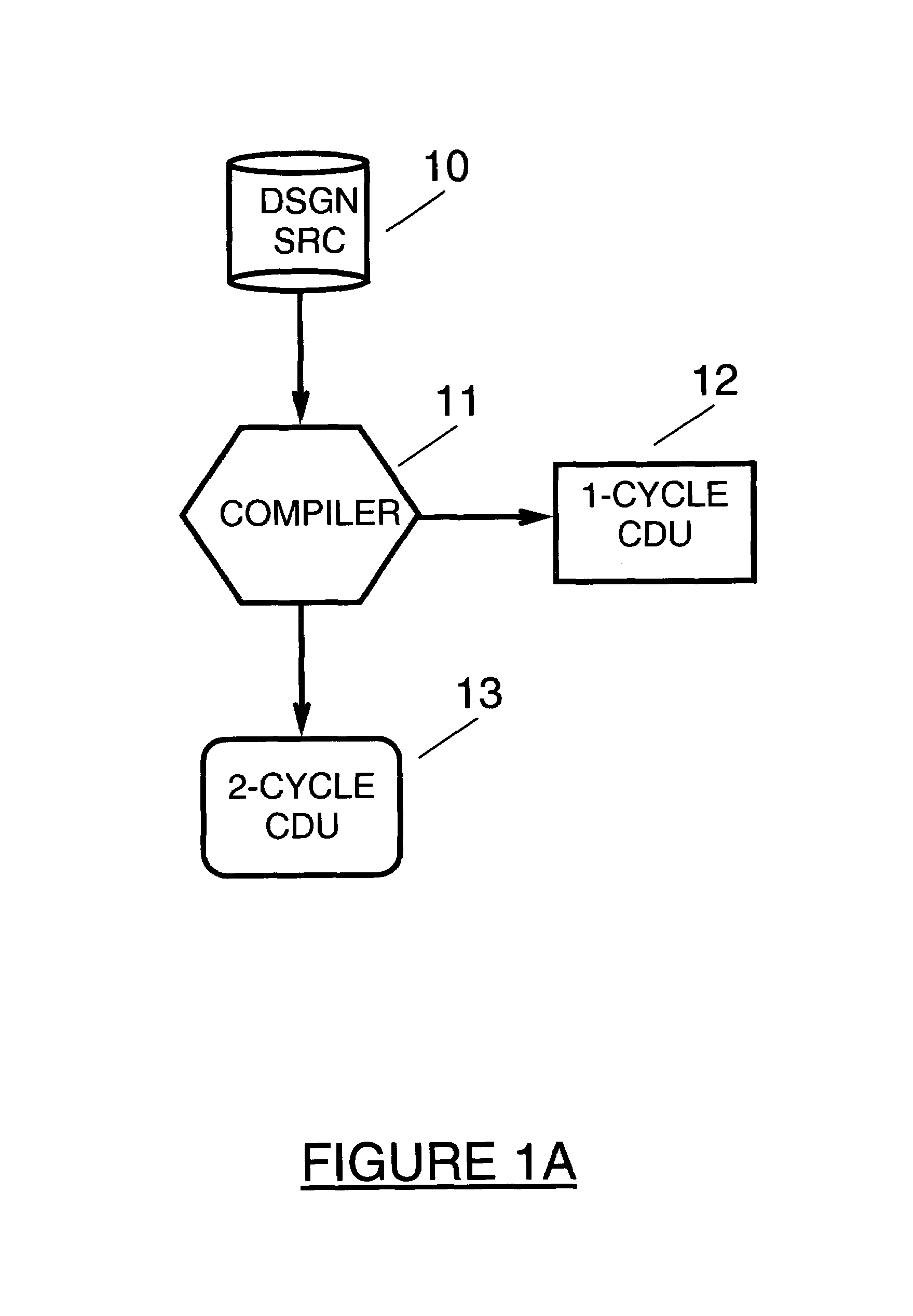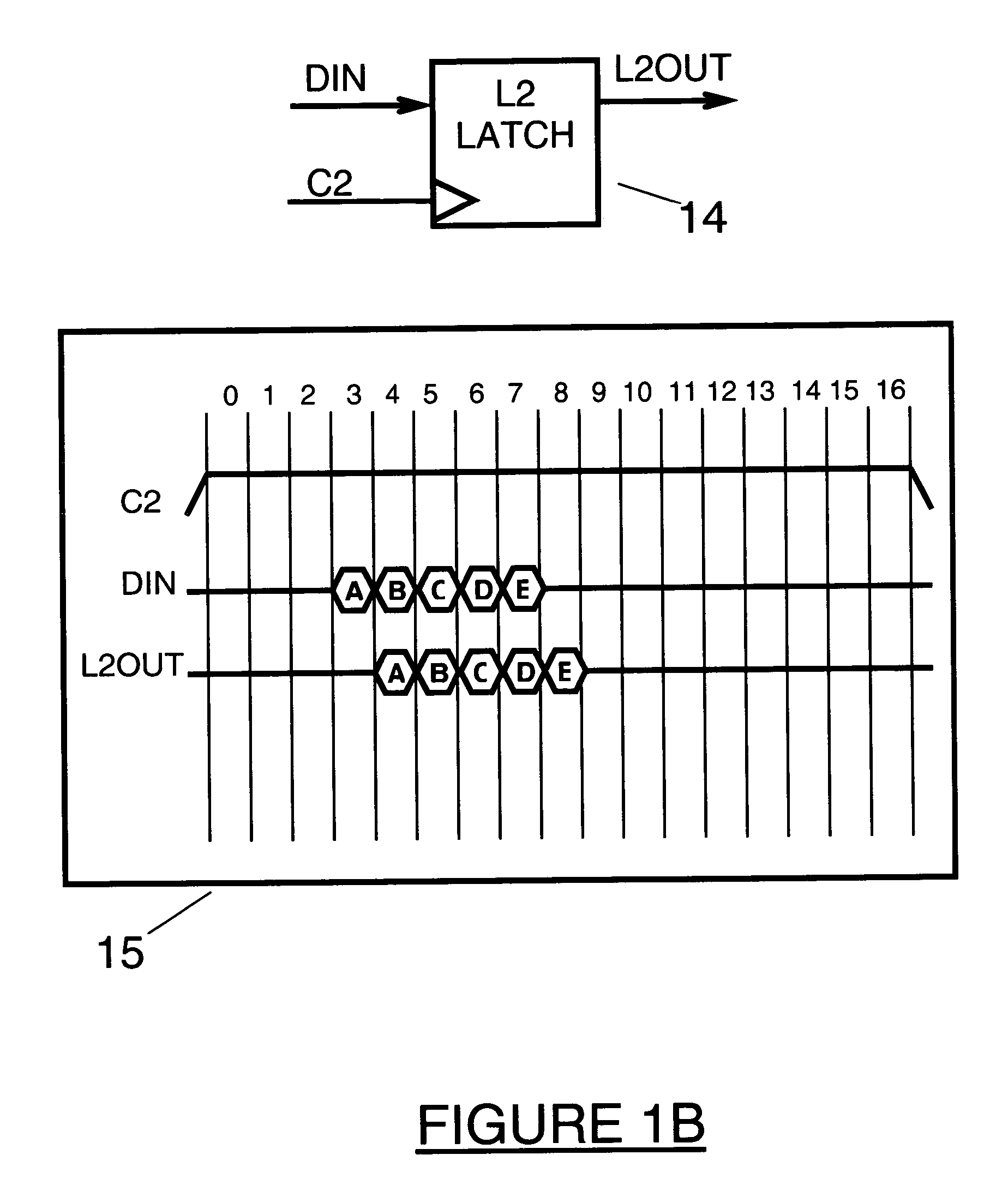Method for the creation of a hybrid cycle simulation model
a hybrid cycle and simulation model technology, applied in the field of cycle simulation, can solve the problems of small event traces for problem debugging, the inability to effectively validate functions like clocking, phased lock loops and built-in self-tests, and the inability to effectively validate functions in a 1-cycle simulation environment. achieve the effect of improving performan
- Summary
- Abstract
- Description
- Claims
- Application Information
AI Technical Summary
Benefits of technology
Problems solved by technology
Method used
Image
Examples
Embodiment Construction
[0043]Turning now to the drawings in greater detail, it will be seen that FIG. 1A depicts a flowchart comprising the steps for building a plurality of compiled data units (hereafter referred to as CDUs) which represent the critical component of a hybrid cycle simulation model build process. The preferred embodiment enables the cycle simulation models to be constructed using 1-cycle (also known as single cycle) CDUs, 2-cycle CDUs or a combination thereof.
[0044]As seen in FIG. 1A, the Design Source (10) is fed into a Compiler (11). In our preferred embodiment, the Design Source is represented by the VHDL hardware description language wherein said Design Source (10) is described at the register transfer level (RTL). One skilled in the art can appreciate that the present invention is applicable to alternate design source descriptions, such as, but not limited to, Verilog, JHDL and the like. The Compiler (11) step in FIG. 1A represents any hardware description language compiler used to d...
PUM
 Login to View More
Login to View More Abstract
Description
Claims
Application Information
 Login to View More
Login to View More - R&D
- Intellectual Property
- Life Sciences
- Materials
- Tech Scout
- Unparalleled Data Quality
- Higher Quality Content
- 60% Fewer Hallucinations
Browse by: Latest US Patents, China's latest patents, Technical Efficacy Thesaurus, Application Domain, Technology Topic, Popular Technical Reports.
© 2025 PatSnap. All rights reserved.Legal|Privacy policy|Modern Slavery Act Transparency Statement|Sitemap|About US| Contact US: help@patsnap.com



